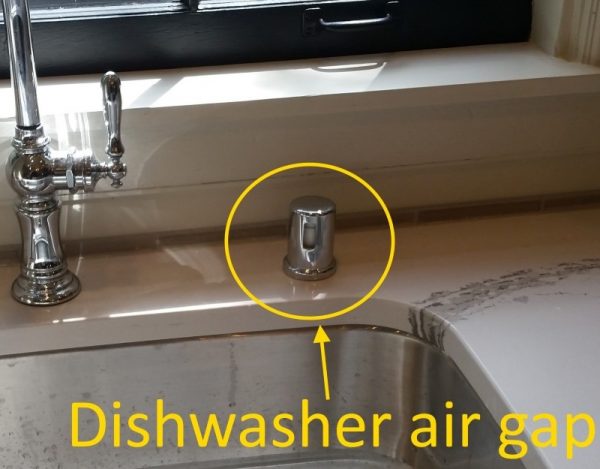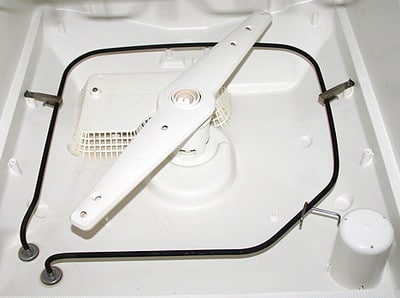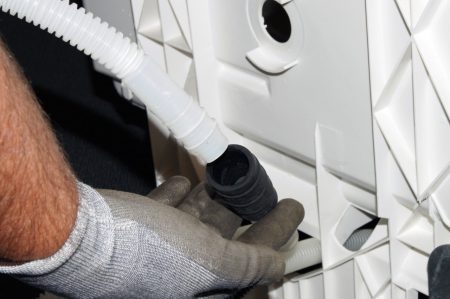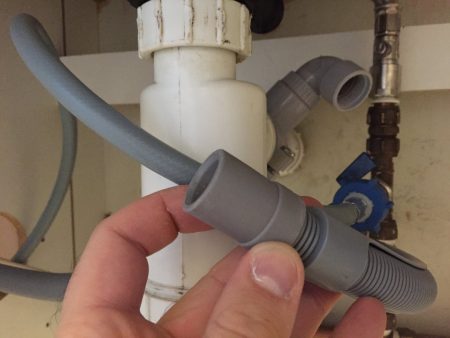- No Obligations
- Stop Paying Too Much For Your Contractor
- No Spam Calling
- Screened & ID Checked Contractors only!
Dishwasher Not Draining? Quick Fix Tips To Solve The Problem
0
 Dishwasher Not Draining? Quick Fix Tips To Solve The Problem
earlyexperts.net
Dishwasher Not Draining? Quick Fix Tips To Solve The Problem
earlyexperts.net
Your day’s going fine until you open the door of the dishwasher and there is a pool of dirty water sitting in the bottom, and you know something is not right. Before you dial a plumber, there are a few quick fixes you can look at to solve the problem. Here’s what to do before you make that call.
Rerun the wash cycle
This might seem like an odd idea, but the regular cycle of the dishwasher may have been interrupted, and thus has not been allowed to drain thoroughly. However, if the standing water is still there after a second cycle, there may be a problem with it draining, and we have to move to the next fix.
Run the garbage disposal
Usually, the drain hose from the dishwasher is connected to the garbage disposal unit under the sink. If the disposal unit is blocked with any waste or food that has not been ground up, then it can become clogged, and stop the water draining from the dishwasher. To prevent the garbage disposal unit getting blocked always keep the unit running with a steady stream of water for about 10 seconds after any waste food has been processed.
Check the air gap

If you don’t have a garbage disposal unit, then check the air gap which connects to the sink. The air gap is a small, often stainless steel slotted cylinder, which is attached to the sink by the faucet. A small hose from the air gap links to the drain hose of the dishwasher.
The air gap is there to stop air locks forming in the pipe used to drain the dishwasher. Occasionally debris can block the air gap and cause draining problems. To inspect the air gap, all you need to do to remove it is to twist the cylinder counterclockwise. Remove any debris or gunk that may have become trapped, put it back in place, and run another dishwasher cycle to see if the problem is solved.
If you still have standing water in the bottom of your dishwasher, then its time to look at any possible problems within the machine itself. First, we have to remove the water from the bottom of the machine. If you take out the bottom dish tray, you can bail out the majority of the water using a plastic cup, and then use kitchen towels to soak up the rest.
Type of detergent used
The blockage could have been caused by using the wrong type of detergent in your machine. Dishwasher soap is designed not to produce suds. However, it is easy to put in the wrong type of detergent if you get distracted after a tiring day. You might have run out of regular dishwasher soap and put in laundry detergent as a substitute – not a great idea. You may find the bottom of the machine full of suds and gooey soap residue that has stopped the dishwasher from draining correctly. Use a spoon or similar to remove all the excess and open up the drain at the bottom of the machine. Once it is cleared, run another dishwasher cycle to ensure the blockage is clear and the machine is draining correctly.
Check the drain basket

OK, so you’ve been using the right detergent in your dishwasher, so what’s next to look at. Well, it’s time to get down and dirty with the drain basket at the bottom of the machine. The drain basket is usually in the center of the machine at the bottom and can be held in place by locking screws or snaps. Once unlocked, you can remove the cover and check for a build-up of food scraps and waste in the drain.
You can use your fingers or a spoon to remove anything trapped in the drain basket. On some machines, it can be removed entirely and thoroughly washed under running water. Once it has been cleaned, replace it back into the machine, and run a dishwashing cycle to confirm the blockage has been taken care of and the washer is draining correctly. One way to make sure you don’t get a blockage in the drain basket is to always rinse plates, cutlery and glassware in the sink before putting it into the dishwasher. This prevents food debris from getting into the machine and avoids repeated cleaning of the drain basket.
Check the drain hose

Still got problems, it’s time to check the drain hose from the dishwasher to the drain. The drain hose is usually made of lightweight plastic that is ribbed so it can be bent in different directions. However, the ribbing means that it can get kinked and prevent the water from draining. Maybe something has been stuffed under the sink, and it is constricting the drain pipe if so remove the offending object and straighten the hose. Unfortunately, once a hose has been kinked it will likely do it again in the same place. The best remedy, in this case, is a simple DIY job to replace the hose.
Check the ribbed pipe

Looking at the drain hose and it seems OK and is not kinked, but inside may be another matter. The pipe could be clogged up with debris and food waste. For this, you are certainly going to have to remove the drain hose to check for a clog. Before you start dismantling any part of the machine, it is best to unplug it from the mains for safety. Although you’re not likely to get involved with any wiring, it’s better to be on the safe side. Locate where the ribbed pipe connects to the drain pump, this may require you removing an outside panel. Make sure you have some old towels handy to catch any water or debris that may remain in the pipe when you detach it.
Disconnect the drain hose from the pump; you might have to consult the machine’s owners manual for details on how to do this. Once detached check to see if the clog is at one open end of the hose. You can use a screwdriver or a straightened piece of coat hanger wire to probe into the pipe to search out any blockages and dislodge them. You may have to remove the hose from the other end, by the air gap if there is no visible blockage at the pump end. Never use a plumber’s snake to try and unblock the pipe as dishwasher hoses are made of light-grade plastic and are not designed to withstand the cutting motion of the tool.
If the blockage cannot be removed easily, it is probably best to replace the drain hose with a new one, as they are inexpensive and easily obtained. Also, if the drain hose continues to get blocked up, then best it is replaced.
When to call a plumber
If all of the above fails, then it’s time to call a plumber. You’ve done all the essential problem diagnosis, and it may mean there is a mechanical or electrical issue inside the machine that needs expert attention. If parts need to be replaced, they need to be done by a qualified technician so as not to invalidate any warranty you may have on the machine.











